Web Scraping Tools - Explained

Rajinder Singh
Deep Learning Researcher
25-May-2023
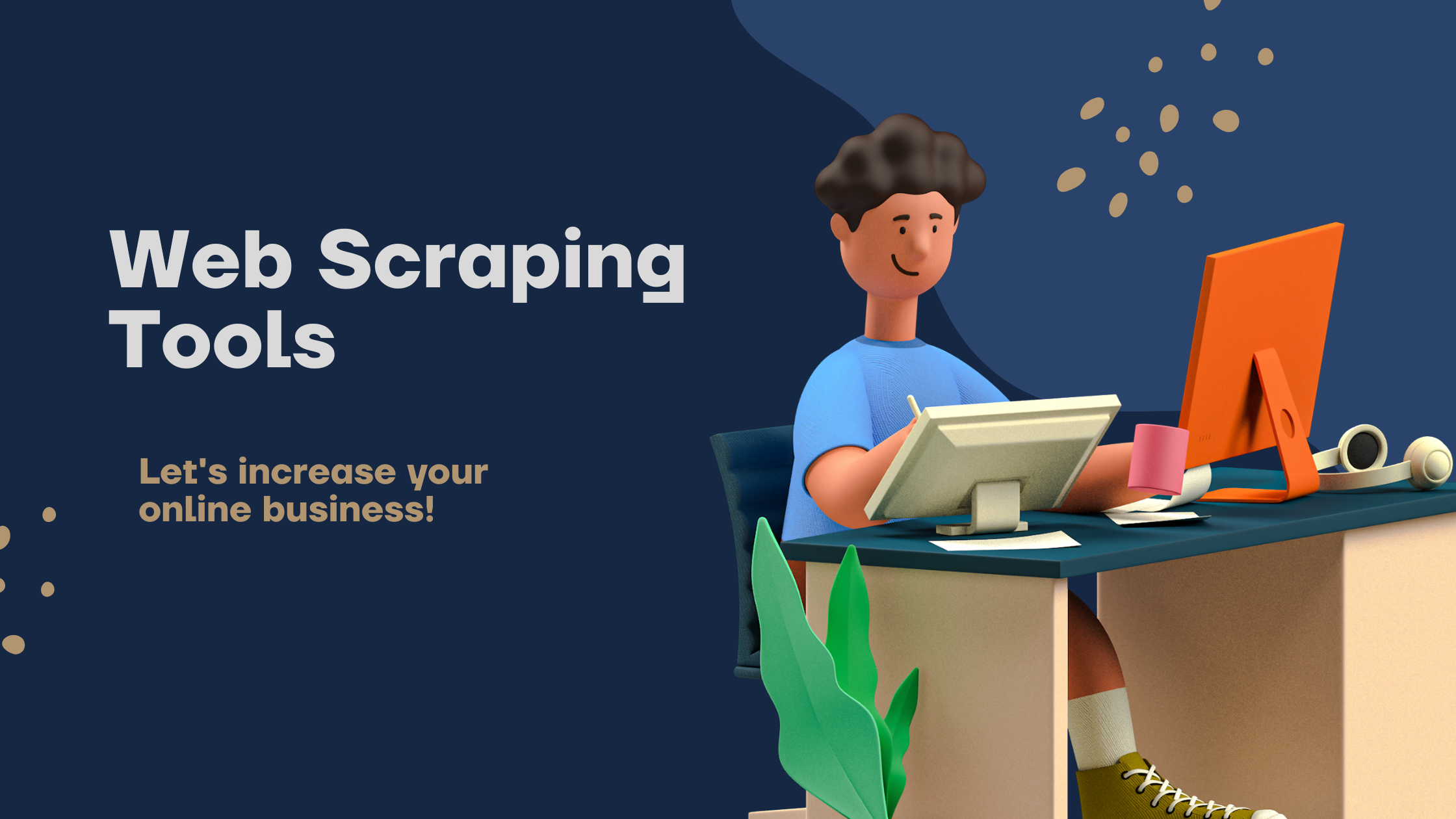
Web Scraping Tools
Web scraping, also known as web data extraction, is the process of retrieving or “scraping” data from a website. Unlike the mundane, mind-numbing process of manually extracting data, web scraping uses intelligent automation to retrieve hundreds, millions, or even billions of data points from the internet’s seemingly endless frontier.
The volume of data on the internet is growing exponentially. There are over 1.7 billion websites online, and more are created every day. In this sea of data, how can businesses, researchers, and individuals hope to find the information they need? The answer lies in web scraping.
This guide aims to provide an in-depth overview of some of the most powerful web scraping tools available today. While some of these tools require a level of technical knowledge, others are suitable for non-coders. Whether you're a seasoned data scientist, a software developer, or a digital marketing specialist, you'll find a tool that fits your needs.
1. Introduction to Web Scraping
Web scraping is an automated method used to extract large amounts of data from websites quickly. The data on websites is unstructured. Web scraping enables us to convert that data into a structured form.
2. Why Use Web Scraping Tools?
There are countless reasons why businesses, academics, and individuals might want to scrape a website. Some common uses include:
- Data Journalism: Journalists and researchers can use scraping tools to track changes to public records or to gather information from various sources for an investigative story.
- Price Comparison: E-commerce companies often use web scraping tools to monitor their competitors' pricing strategies. By scraping product prices and descriptions, they can keep a pulse on their market.
- Lead Generation: Many businesses use web scraping to generate leads and gather contact information from business directories or social media sites.
- Sentiment Analysis: By scraping customer reviews and social media conversations, businesses can gain insights into how their products are perceived in the market, allowing them to react to customer feedback more effectively.
- SEO Monitoring: SEO companies use web scrapers to monitor website performance, track changes in SEO rankings, and gather other relevant data.
3. Types of Web Scraping Tools
There are primarily three types of web scraping tools:
- Self-service Tools: These are point-and-click tools that allow users to scrape data without coding. They often come with a visual interface, where you can annotate the data you need, and it automatically extracts it for you.
- Programmatic Tools: These are libraries or frameworks that you can embed in your code. They offer more flexibility and capabilities but require programming knowledge.
- Managed Services: These are end-to-end platforms where you specify your requirements, and they deliver the data. They are the most comfortable but the least flexible and often the most expensive.
4. Detailed Review of Web Scraping Tools
Below is a detailed review of some popular web scraping tools. Each tool review includes a description of its features, benefits, and use cases.
Import.io
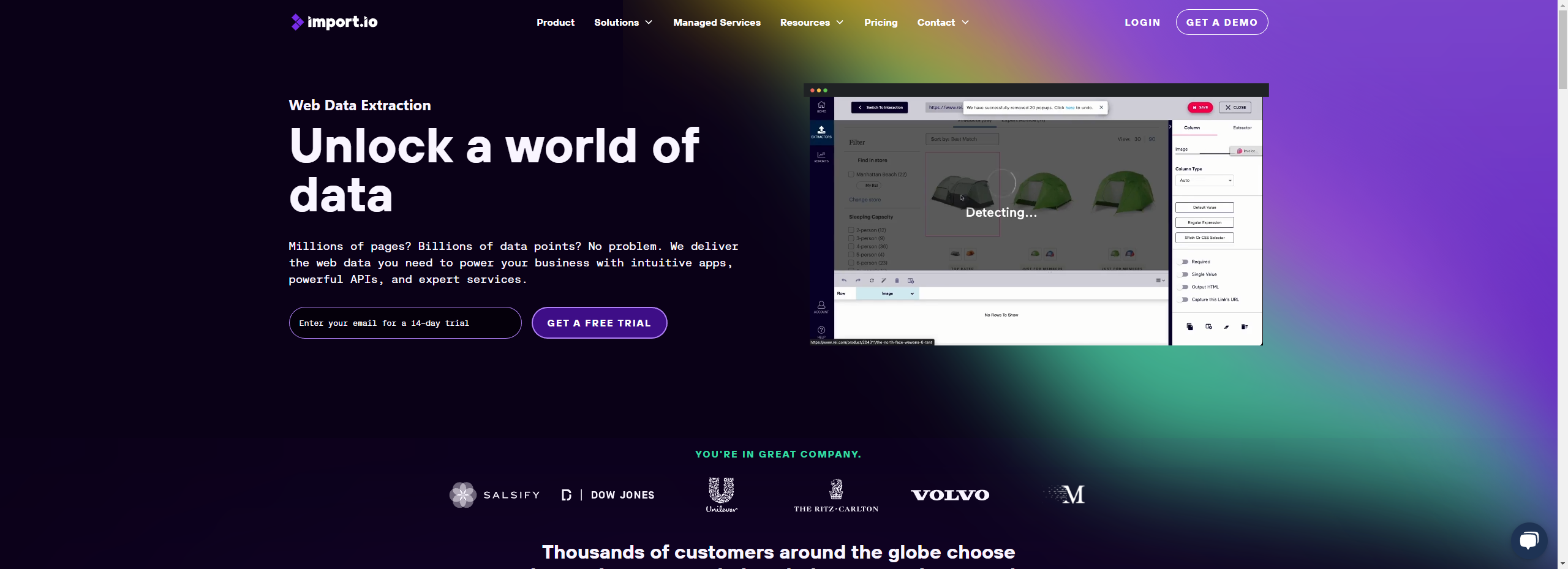
Import.io is a web-based tool that extracts data from websites withoutwriting any code. It provides a visual interface for pointing to the data fields you want to scrape, and then it does the rest.
Features:
- Point and Click Interface: It allows users to identify the data they need using an intuitive point and click interface.
- Data Reports: Import.io delivers the scraped data as a CSV or Microsoft Excel file or can sync it directly to your data warehouse.
- Scheduler: It can schedule data extractions and always delivers up-to-date data.
Use Cases:
Import.io is perfect for people without programming skills but need to extract structured data from a webpage. It can be used for price comparison, sentiment analysis, social media scraping, etc.
Octoparse
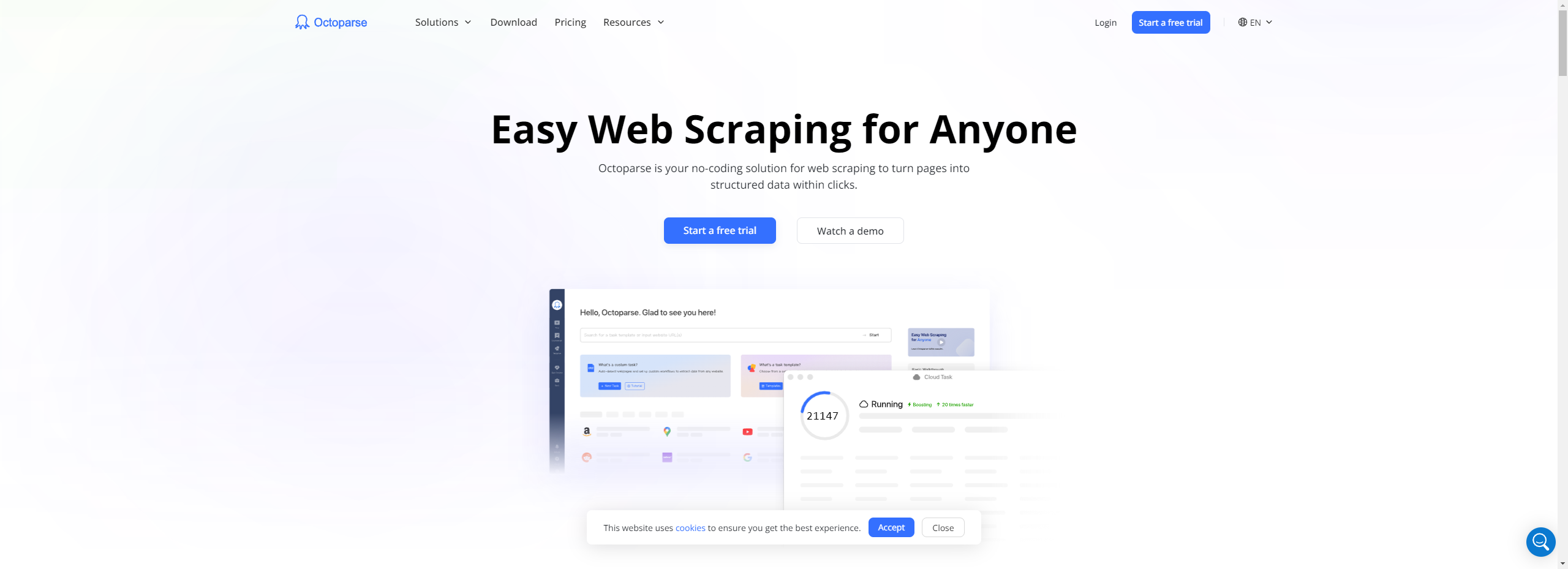
Octoparse is a robust web scraping tool that automates data extraction from many types of websites. It has a visual workflow designer that allows users to manage their data extraction specifications.
Features:
- Cloud Extraction: Octoparse offers a Cloud-Based Data Extraction feature that provides a high-speed data extraction, given that the data extraction process is performed on their servers instead of the user's local device.
- Export Format: It allows users to export data in various formats, including Excel, HTML, TXT, and databases (MySQL, SQL Server, and Oracle).
- API Access: Octoparse provides an API, allowing users to handle their data remotely.
Use Cases:
Octoparse can be used for a broad range of data extraction purposes, such as lead generation, price monitoring, market research, and academic research.
ParseHub
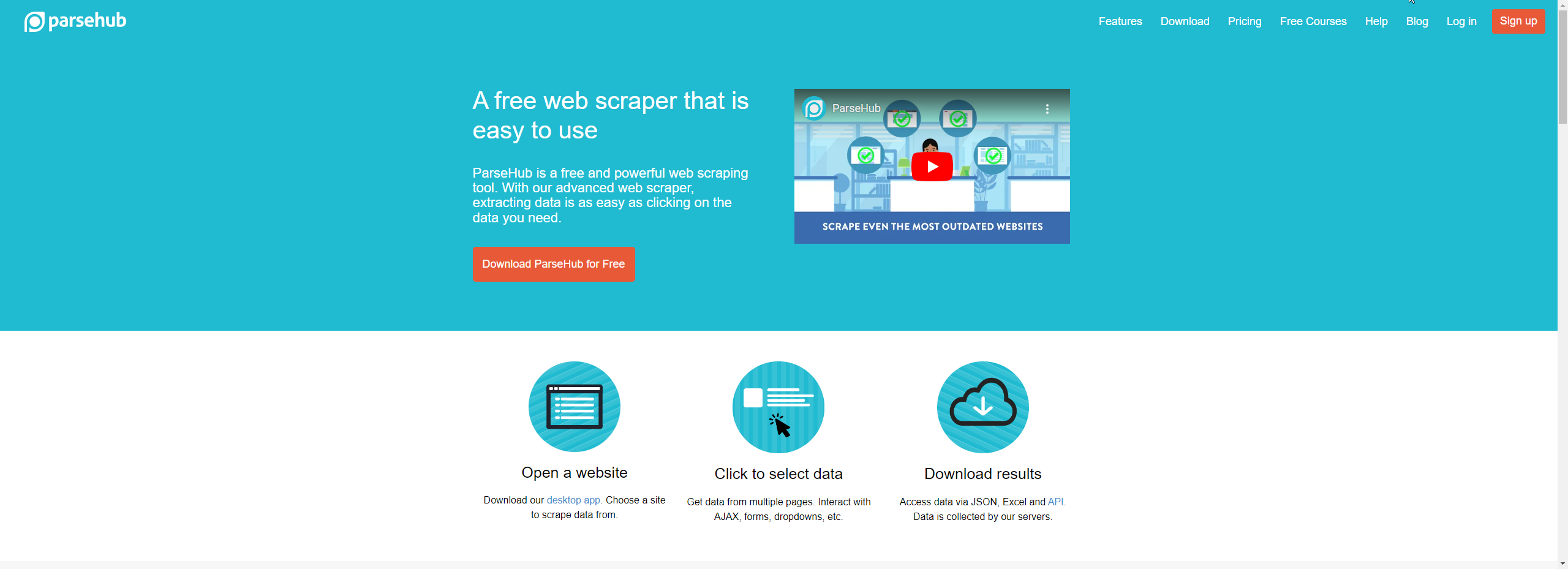
ParseHub is a visual data extraction tool that anyone can use to get data from the web. You can set up a plan to extract data from a website and let ParseHub do the work.
Features:
- Supports JavaScript and AJAX: ParseHub can handle websites with JavaScript and AJAX, which are challenging for many other scrapers.
- Advanced Techniques: It can handle multi-level nested data, pagination, dropdowns, search, and forms.
- Scheduler: It can run scraping projects as often as every 10 minutes or once a year.
Use Cases:
ParseHub can be used for a variety of purposes, such as data journalism, e-commerce growth, AI training data collection, and market trend prediction.
Scrapy
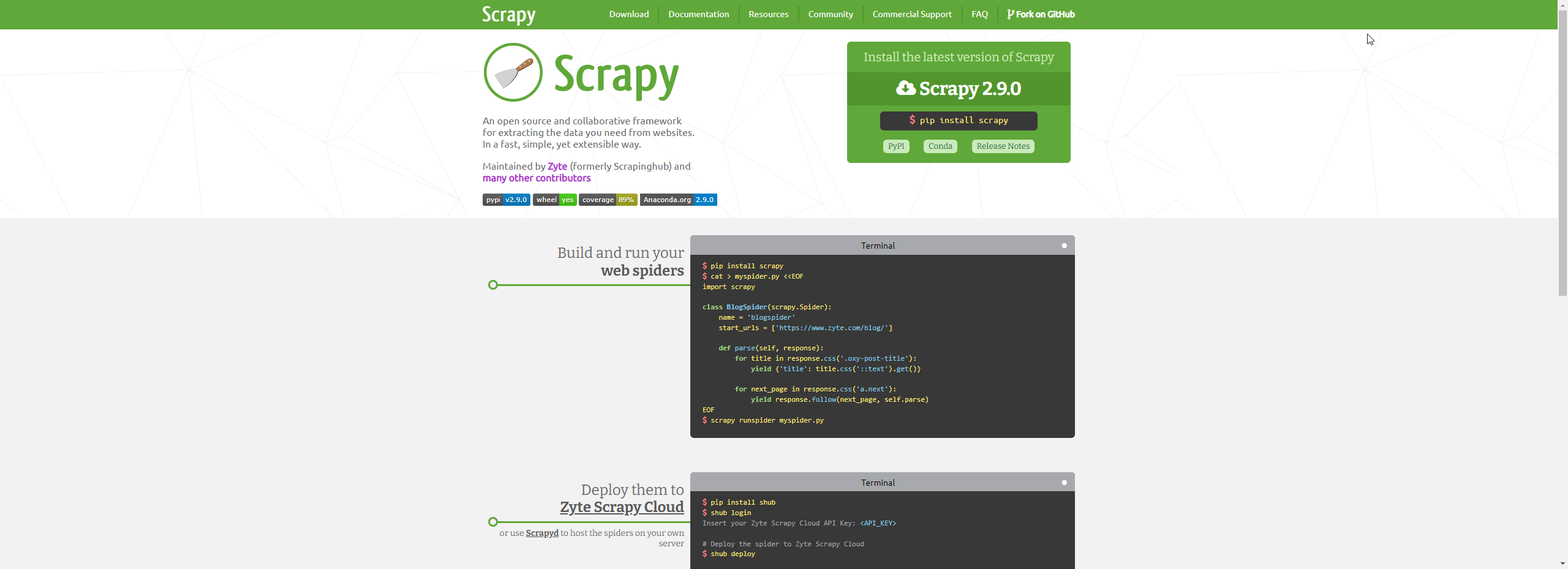
Scrapy is an open-source web crawling framework written in Python. It provides all the tools needed to extract data from websites, process it, and store it in your preferred format.
Features:
- Versatile: Scrapy is extremely versatile and can handle a variety of scraping tasks, including data mining, data processing, and historical archival.
- Robust and Scalable: It is built to handle large scale web scraping tasks. It can even handle scraping tasks distributed over multiple machines.
- Extensive Libraries: Scrapy has a rich ecosystem and community, with numerous libraries that extend its functionality.
Use Cases:
Scrapy is suitable for large scale, complex scraping tasks. It is ideal for data scientists, researchers, and developers who are comfortable with Python programming.
BeautifulSoup
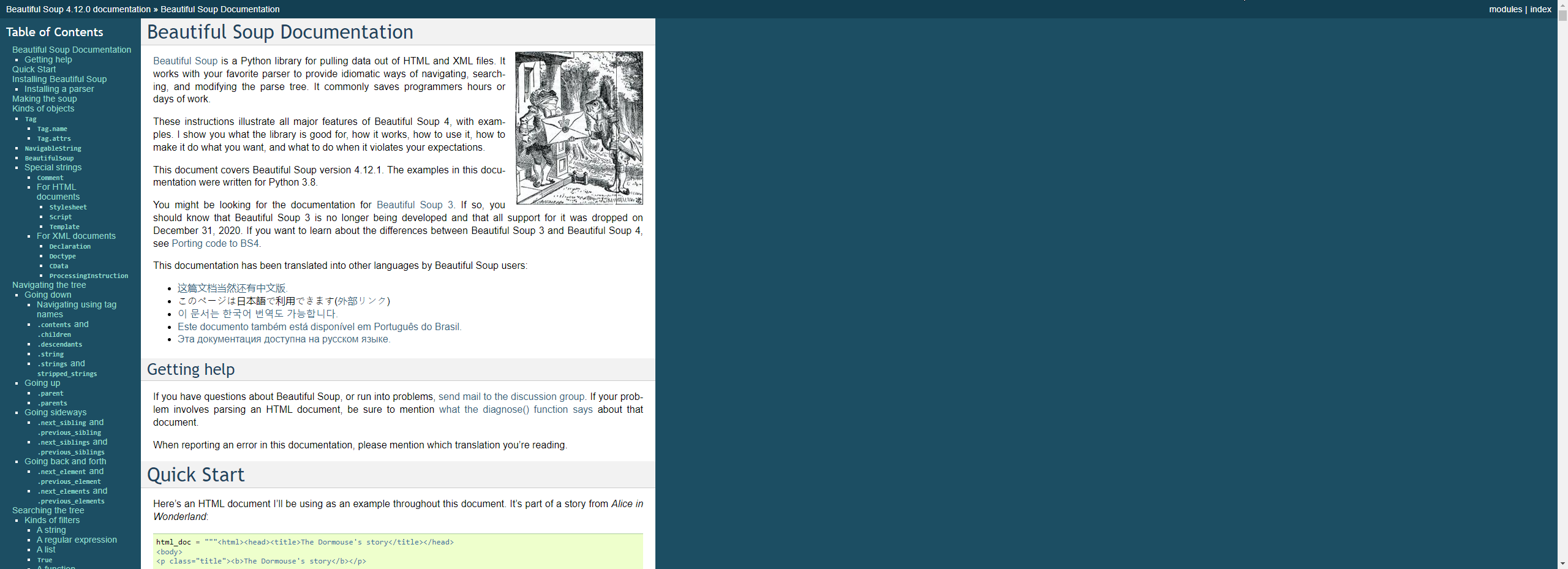
BeautifulSoup is a Python library designed for web scraping purposes to pull the data out of HTML and XML files. It is simple and accessible to beginners, but its simplicity doesn't compromise its functionality.
Features:
- Easy Parsing: BeautifulSoup transforms a complex HTML document into a tree of Python objects, such as tags, navigable strings, or comments.
- Searching the Parse Tree: You can search the parse tree using filters based on tag name, attributes, and more.
- Pythonic Idioms: BeautifulSoup uses Pythonic idioms for iterating, searching, and modifying the parse tree.
Use Cases:
BeautifulSoup is a good choice for web scraping tasks that require parsing HTML and XML documents. Its simplicity makes it a good choice for beginners.
Selenium
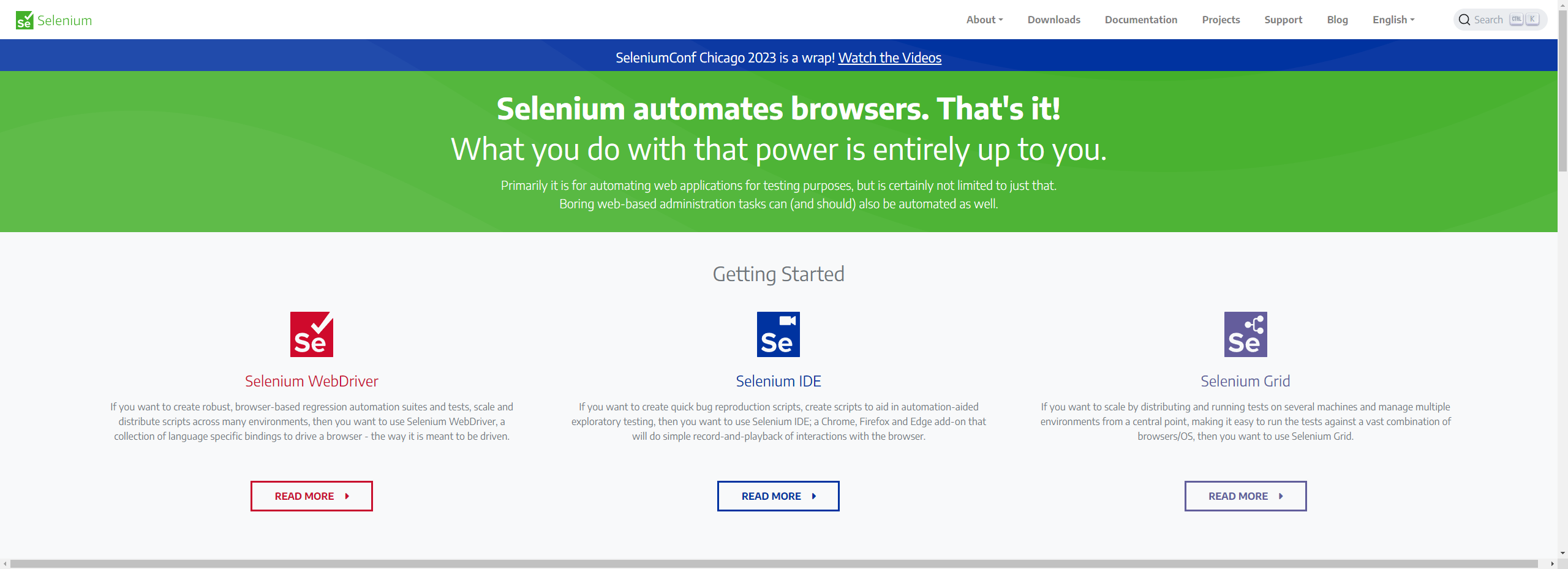
Selenium is a powerful tool for controlling a web browser through the program. It is functional for all browsers, works on all major OS and its scripts are written in various languages i.e Python, Java, C#, etc.
Features:
- Browser Automation: Selenium can automate browser tasks, which is useful when the webpage is interactive, and simple HTTP requests are insufficient.
- Multi-Language Support: Selenium scripts can be written in several programming languages, including Python, Java, and C#.
- Supports Various Browsers: It supports all major web browsers, including Chrome, Firefox, Safari, and Edge.
Use Cases:
Selenium is ideal for web scraping tasks that require interaction with the webpage, such as clicking buttons or filling forms. It's also a good choice for testing web applications.
Puppeteer

Puppeteer is a Node library which provides a high-level API to control Chrome or Chromium over the DevTools Protocol. It's often used for web scraping, automated testing, and generating pre-rendered content.
Features:
- Headless Browsing: Puppeteer is primarily used in its headless mode, offering a fast, automated way to access web content.
- Interactivity: Puppeteer can simulate user interactions like form submissions, keyboard inputs, and button clicks.
- Screenshot and PDF Generation: Puppeteer can generate screenshots and PDFs of pages.
Use Cases:
Puppeteer is useful when you need to execute JavaScript on your pages. It can be used for web scraping, automated unit testing, and server-side rendering.
Cheerio
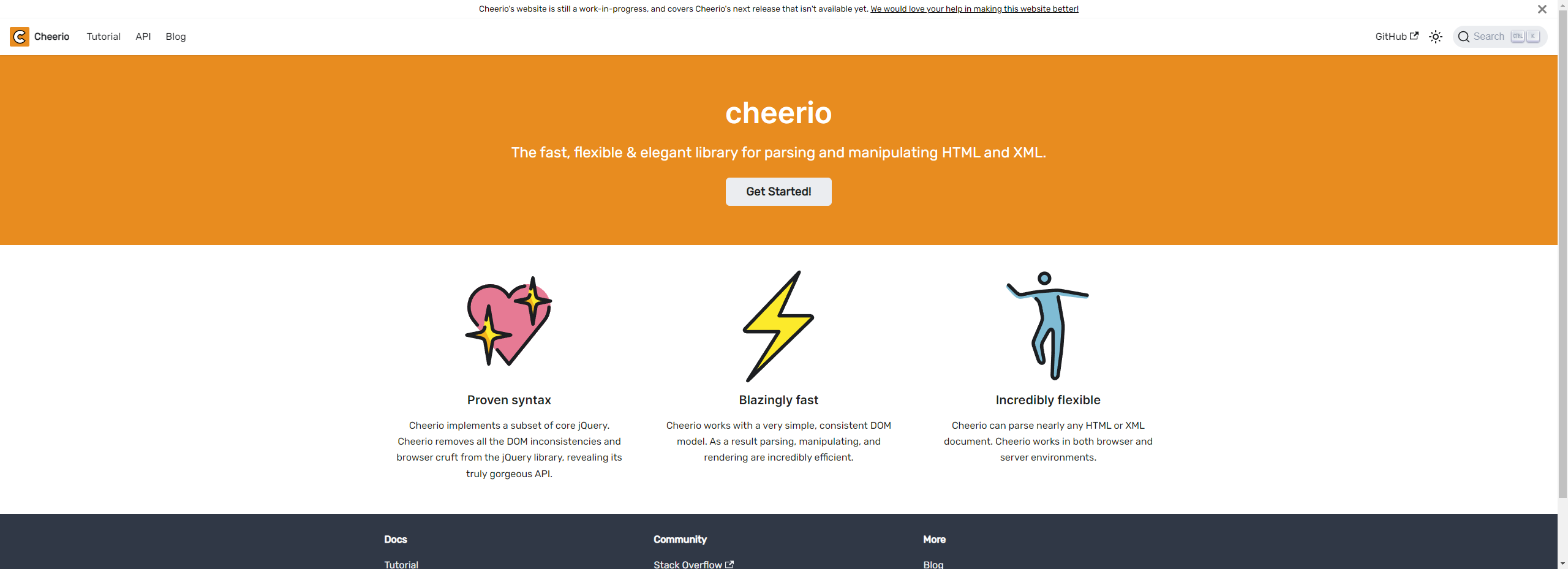
Cheerio is a fast, flexible, and lean implementation of core jQuery designed specifically for the server. It's a Node.js library that helps developers interpret and analyze web pages using a jQuery-like syntax.
Features:
- jQuery Syntax: Cheerio parses markup and provides an API for traversing/manipulating the resulting data structure.
- Performance: Cheerio focuses on a consistent, flexible DOM traversal API and performs parsing and rendering separately, which can improve performance.
- Flexibility: It works with a very wide range of HTML and XML documents, making it highly versatile for web scraping tasks.
Use Cases:
Cheerio is a great tool for server-side manipulation of HTML data, extraction of data from HTML documents, and in particular, web scraping with Node.js.
OutWit Hub
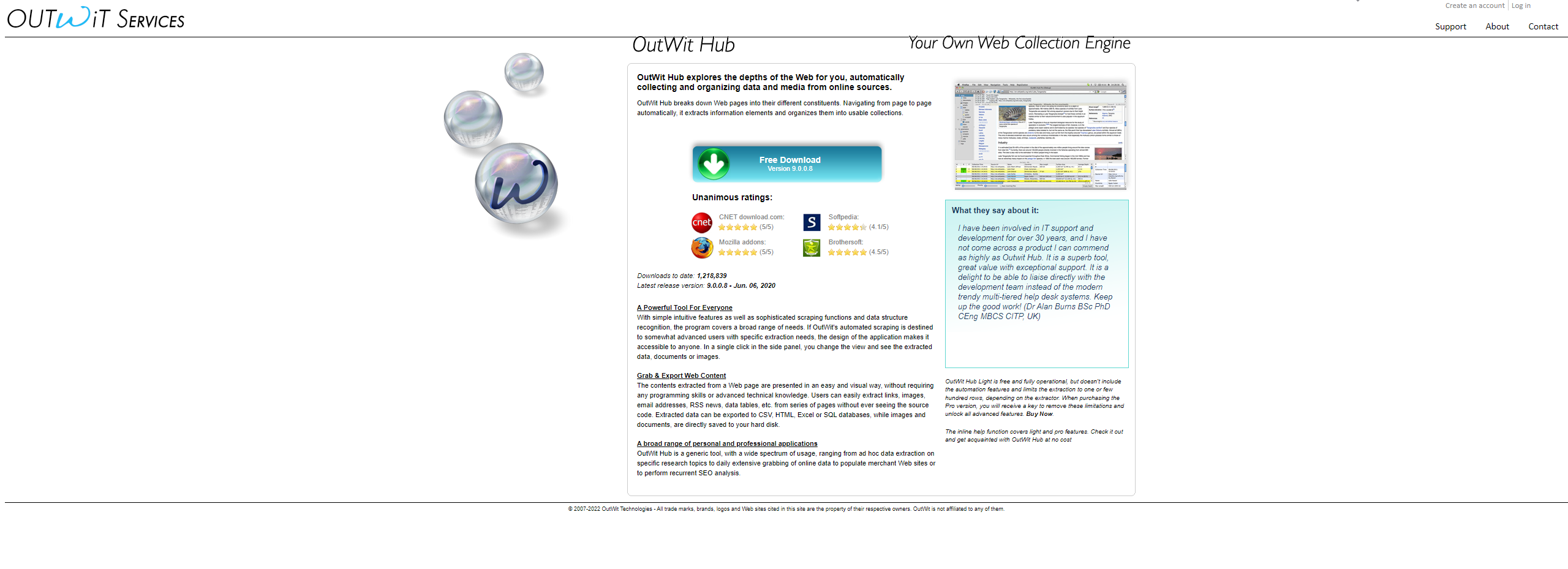
OutWit Hub is a Firefox add-on with dozens of data extraction features to simplify your web searches. This tool can automatically browse through pages and store the extracted information in a format of your choice.
Features:
- Data Extraction: OutWit Hub offers a single interface for scraping small or large amounts of data per needs.
- Data Export: Data collected with OutWit Hub can be exported as Excel, CSV, HTML, or SQL databases.
- Image and Document Extraction: In addition to extracting text data, OutWit Hub can also extract images, pdf files, and more.
Use Cases:
OutWit Hub is suitable for freelancers, and small to medium-sized businesses who need to extract data from the web and store it locally.
WebHarvy
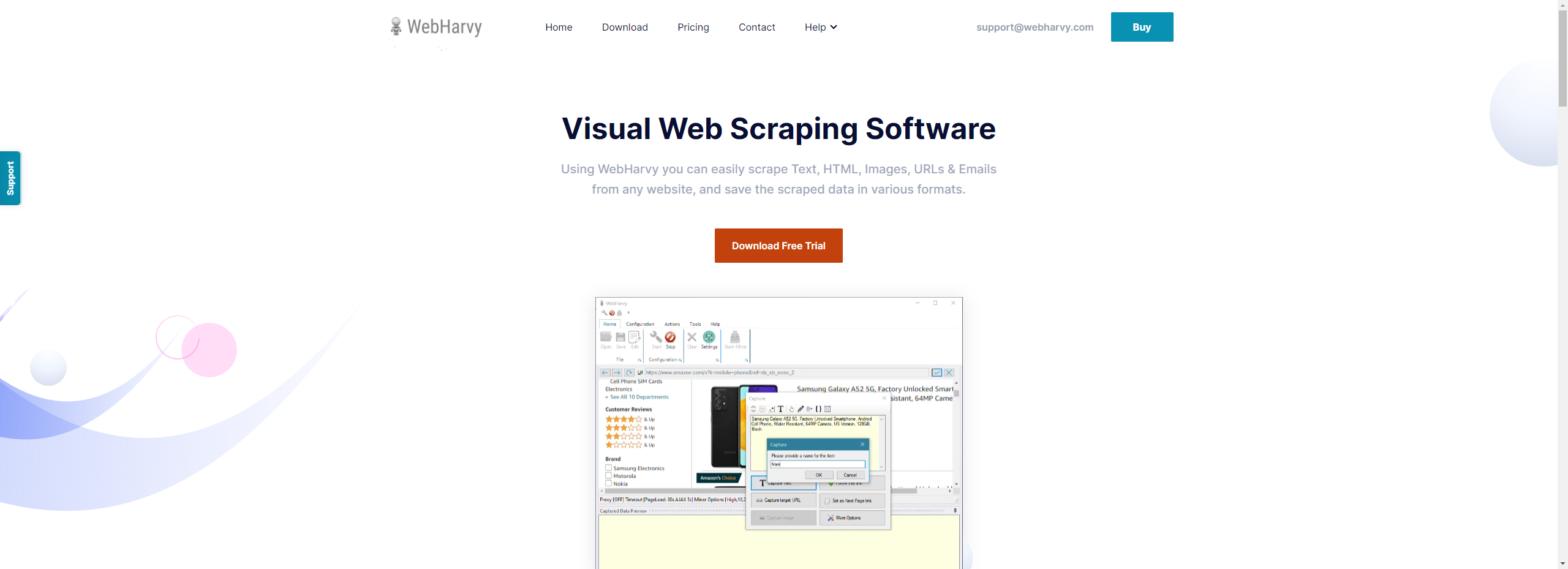
WebHarvy is a visual web scraper with a point-to-click interface to easily scrape data from any website. It's a desktop application with a one-time purchase.
Features:
- Visual Interface: WebHarvy operates on a visual interface that requires minimal coding knowledge. You select the data fields to scrape using a mouse.
- Multi-level Scraping: It can follow links to scrape data from detail pages, and it can also handle pagination automatically.
- Regular Expression Support: WebHarvy supports Regular Expression (RegEx) that can be used to match patterns while extracting data.
Use Cases:
WebHarvy is ideal for non-programmers who need to extract data periodically from specific websites to an Excel or CSV file.
DataMiner
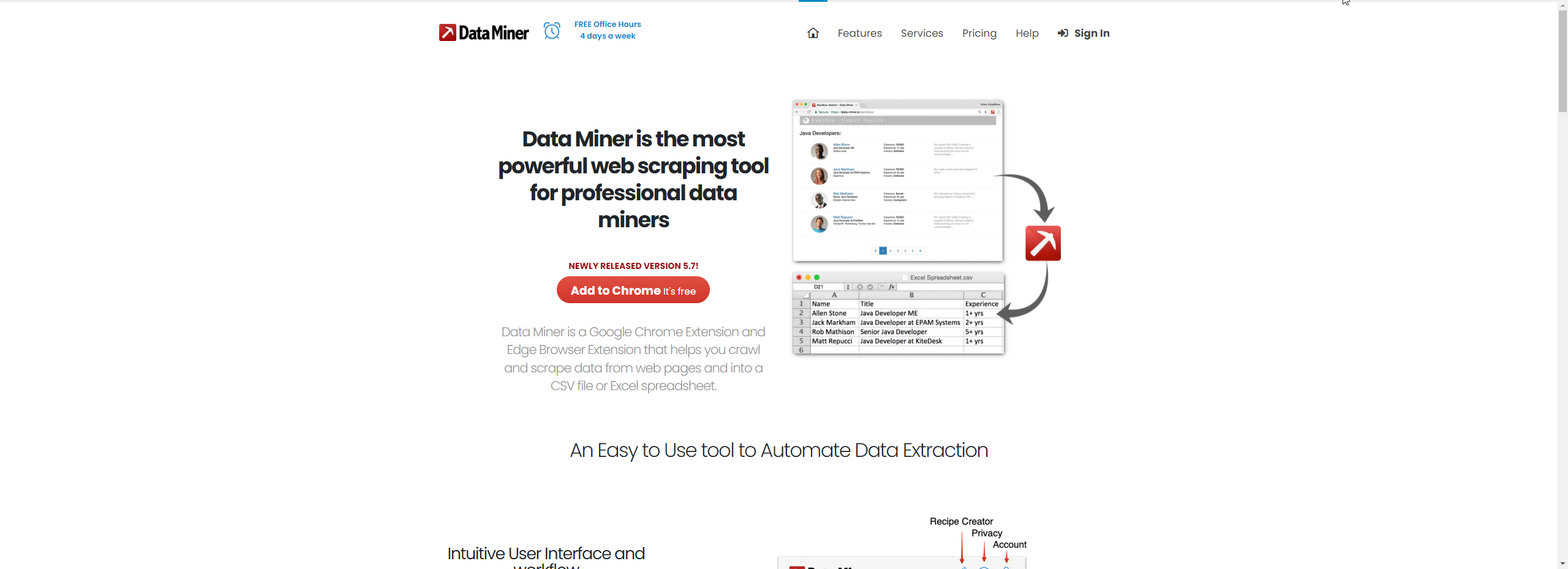
Data Miner is a personal browser extension that helps you transform HTML data in your browser window into clean, structured data sets.
Features:
- Pre-made Data Extractors: Data Miner uses community-submitted, pre-made data extractors to extract data from popular websites.
- Recipe Creation: You can also create your own data extraction recipes using Data Miner.
- Data Export: Data Miner allows data export in CSV or JSON formats.
Use Cases:
Data Miner is useful for professionals who need to gather a moderate amount of data from specific websites and save time on data entry or extraction.
Mozenda
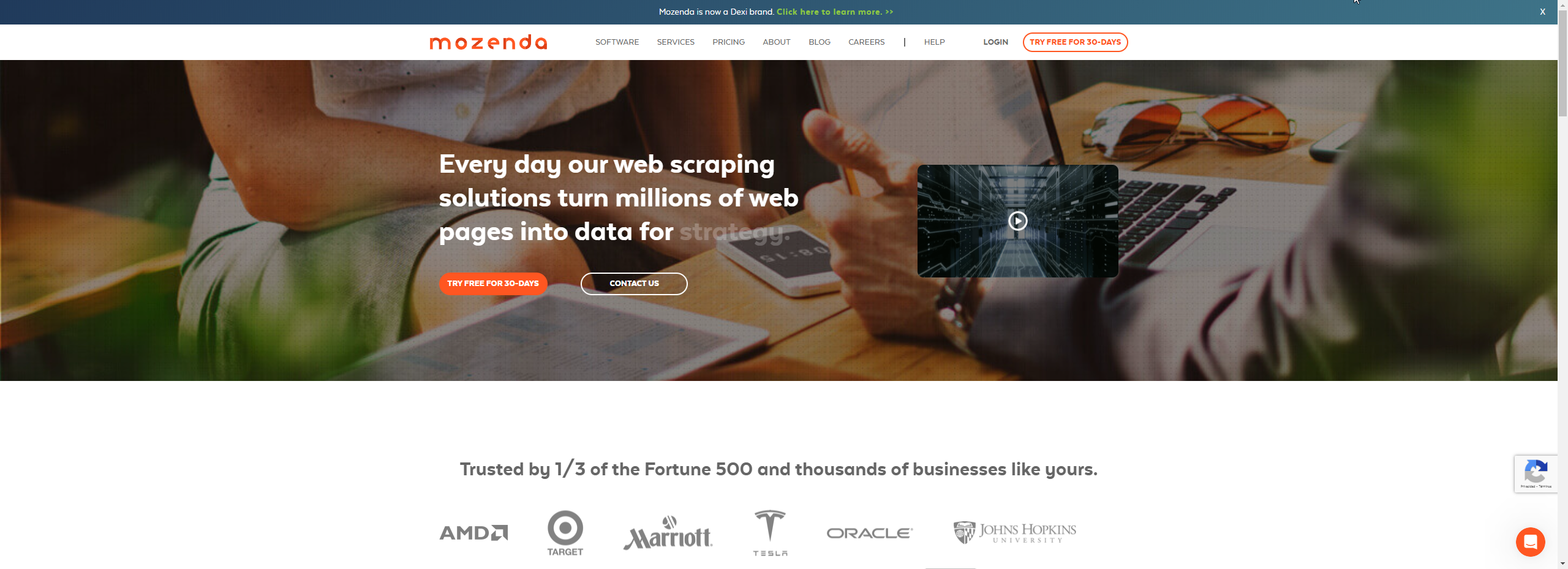
Mozenda is an enterprise web scraping software designed for all kinds of data extraction needs. It has a user-friendly, point-and-click interface and provides the flexibility to gather a wide range of data types.
Features:
- Point-and-Click Interface: Mozenda allows users to easily select the data they need using a point-and-click tool.
- Cloud Platform: Mozenda operates as a cloud-based web scraper, offering high-speed data extraction.
- API Access: Mozenda provides an API, allowing users to integrate their data in other applications.
Use Cases:
Mozenda is ideal for businesses and researchers who need to extract a broad range of data types, including text, images, documents, and more from various websites.
5. Conclusion
Web scraping tools are a necessity in today's data-driven world. From understanding customer sentiment to monitoring business competitors, the uses of web scraping are endless. However, not all web scraping tools are created equal. The right tool for you depends on your technical expertise, the complexity of the task, and the type of data you need to scrape.
If you're a beginner or someone who prefers not to code, tools like Import.io, Octoparse, ParseHub, WebHarvy, and OutWit Hub would be more suitable. On the other hand, if you're comfortable with coding, you can use more flexible and powerful tools like Scrapy, BeautifulSoup, Selenium, Puppeteer, and Cheerio.
Regardless of the tool you choose, remember to always respect the website's terms of service and use the data responsibly.
Capsolver Team 💜
Compliance Disclaimer: The information provided on this blog is for informational purposes only. CapSolver is committed to compliance with all applicable laws and regulations. The use of the CapSolver network for illegal, fraudulent, or abusive activities is strictly prohibited and will be investigated. Our captcha-solving solutions enhance user experience while ensuring 100% compliance in helping solve captcha difficulties during public data crawling. We encourage responsible use of our services. For more information, please visit our Terms of Service and Privacy Policy.
More
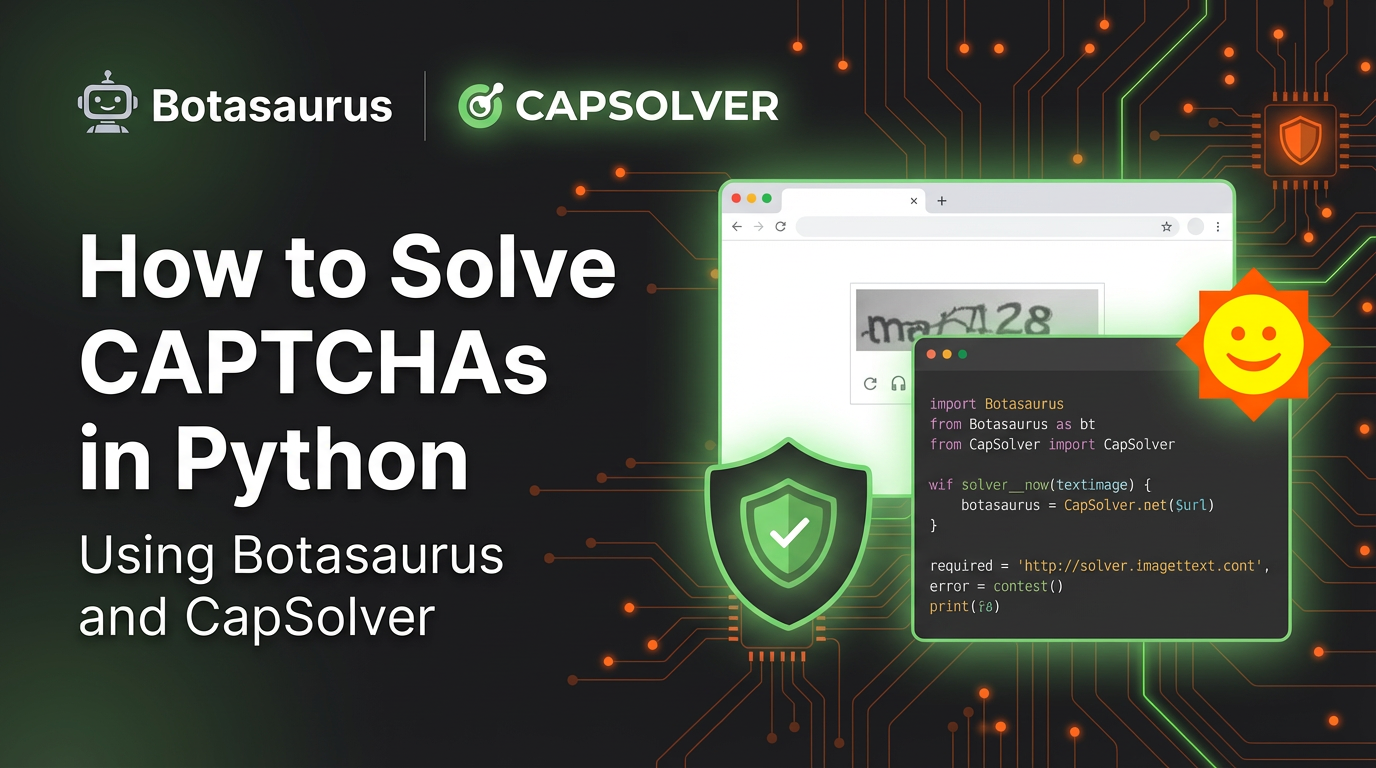
How to Solve CAPTCHAs in Python Using Botasaurus and CapSolver (Full Guide)
Learn to integrate Botasaurus (Python web scraping framework) with CapSolver API to automatically solve reCAPTCHA v2/v3 and Turnstile.

Lucas Mitchell
12-Dec-2025
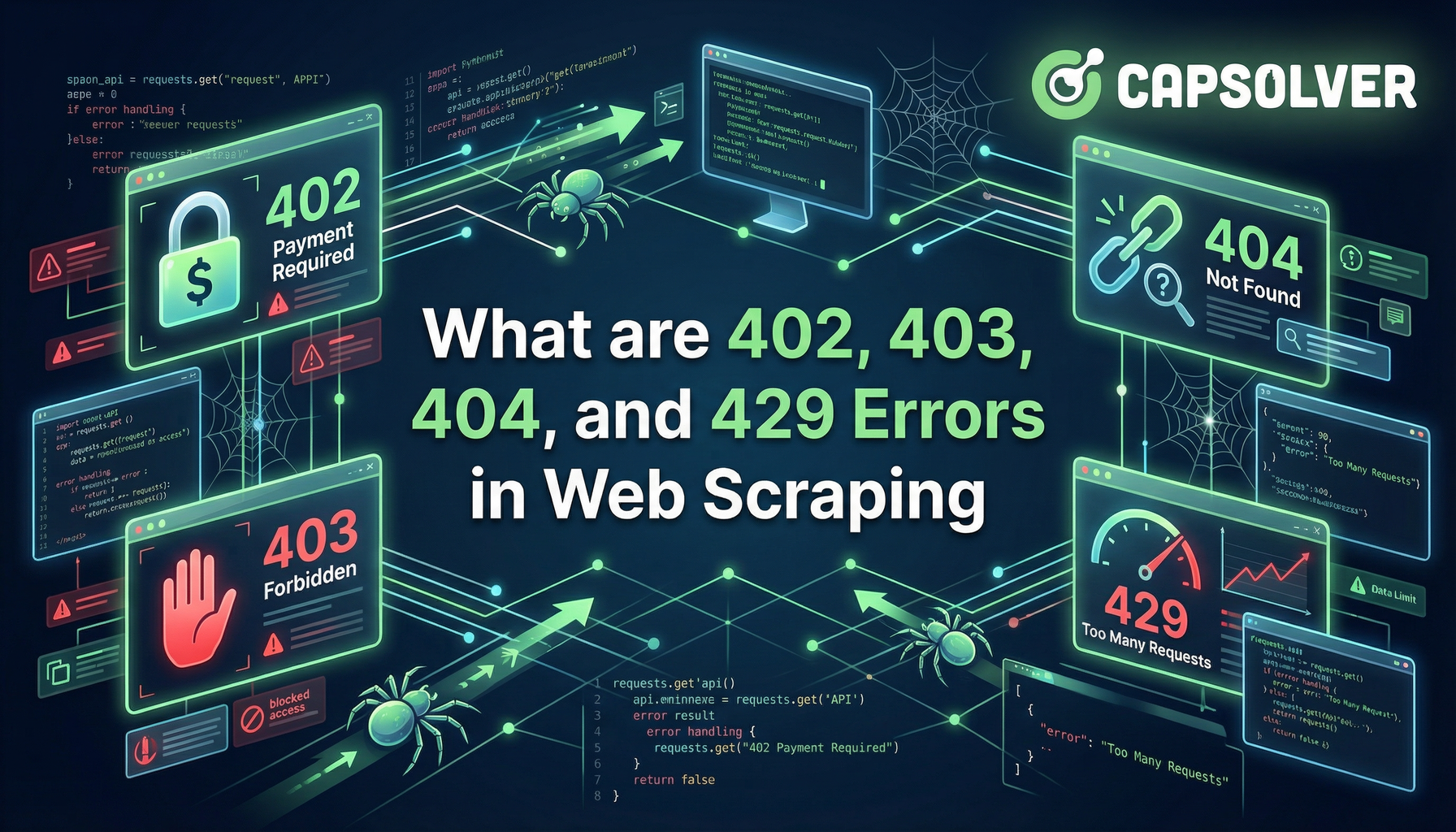
What are 402, 403, 404, and 429 Errors in Web Scraping? A Comprehensive Guide
Master web scraping error handling by understanding what are 402, 403, 404, and 429 errors. Learn how to fix 403 Forbidden, implement rate limiting error 429 solutions, and handle the emerging 402 Payment Required status code.

Sora Fujimoto
11-Dec-2025
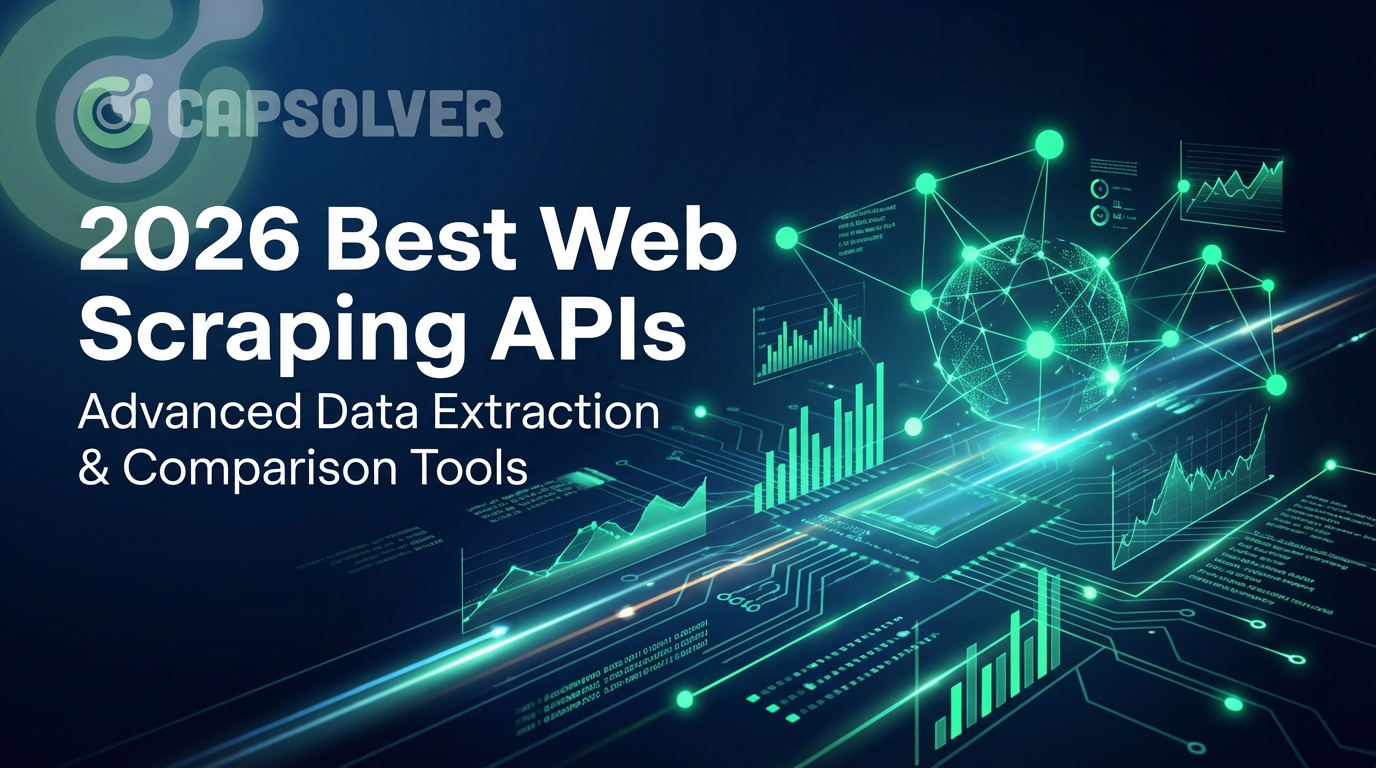
Best Web Scraping APIs in 2026: Top Tools Compared & Ranked
Discover the best Web Scraping APIs for 2026. We compare the top tools based on success rate, speed, AI features, and pricing to help you choose the right solution for your data extraction needs.

Ethan Collins
11-Dec-2025
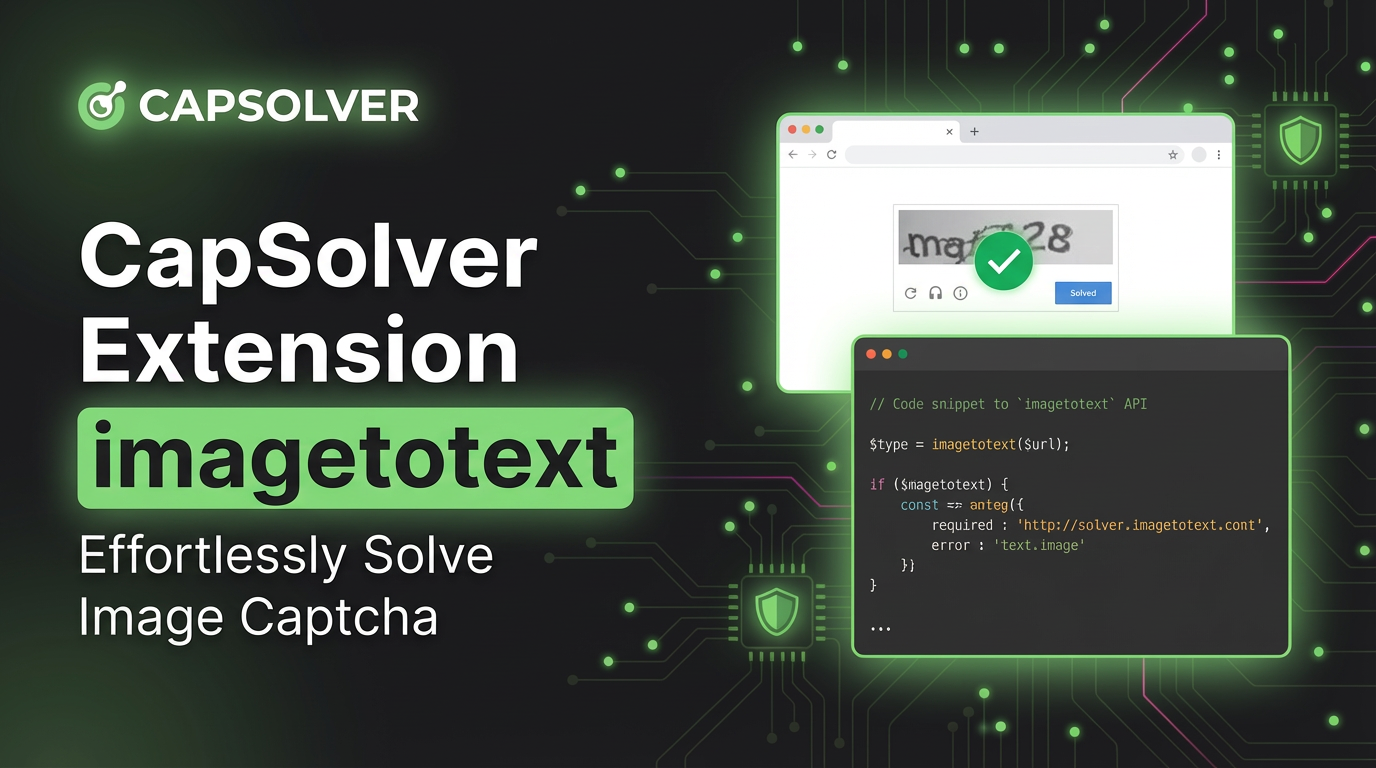
CapSolver Extension: Effortlessly Solve Image Captcha and ImageToText Challenges in Your Browser
Use the CapSolver Chrome Extension for AI-powered, one-click solving of Image Captcha and ImageToText challenges directly in your browser.

Lucas Mitchell
11-Dec-2025
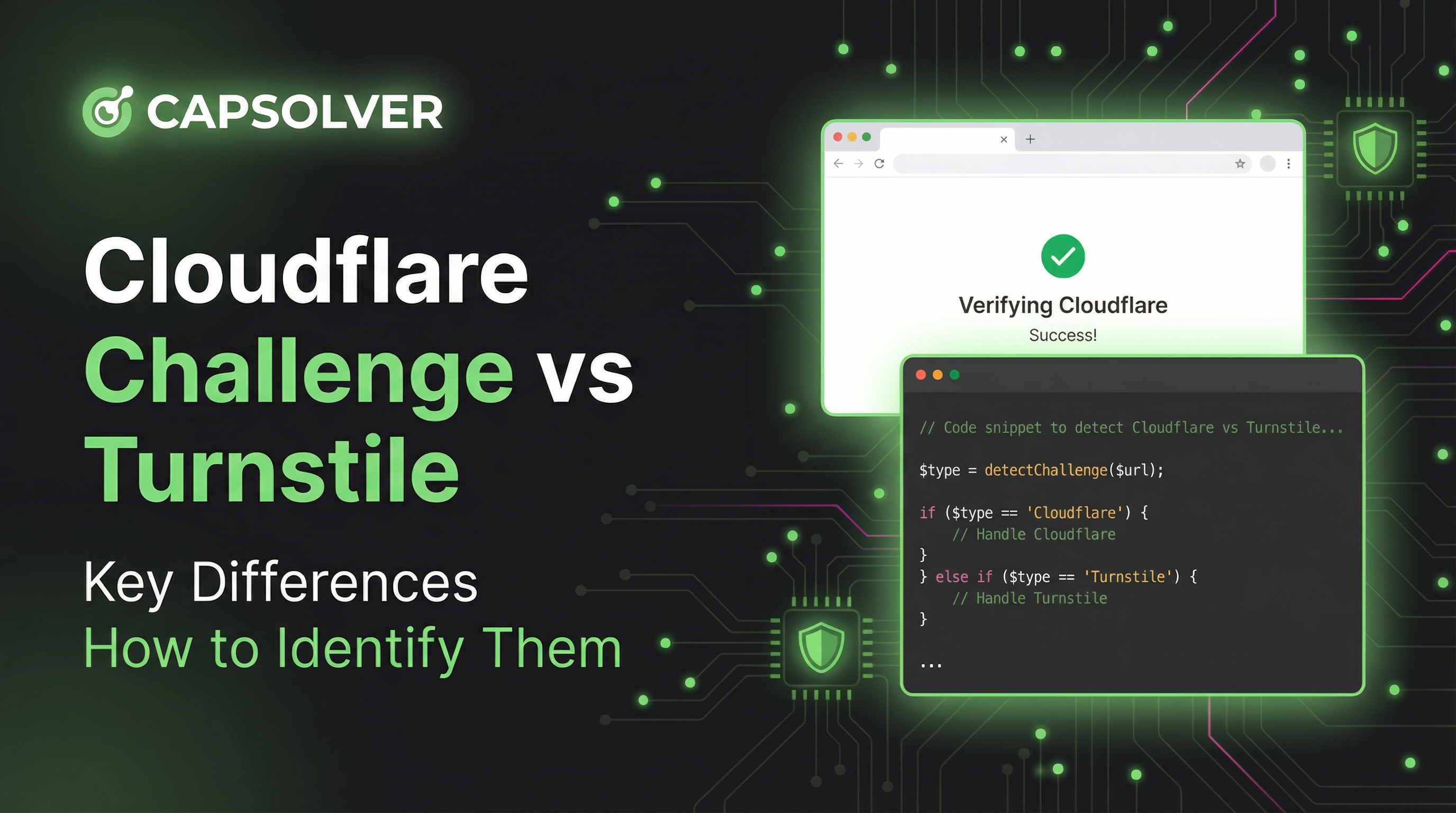
Cloudflare Challenge vs Turnstile: Key Differences and How to Identify Them
nderstand the key differences between Cloudflare Challenge vs Turnstile and learn how to identify them for successful web automation. Get expert tips and a recommended solver.

Lucas Mitchell
10-Dec-2025
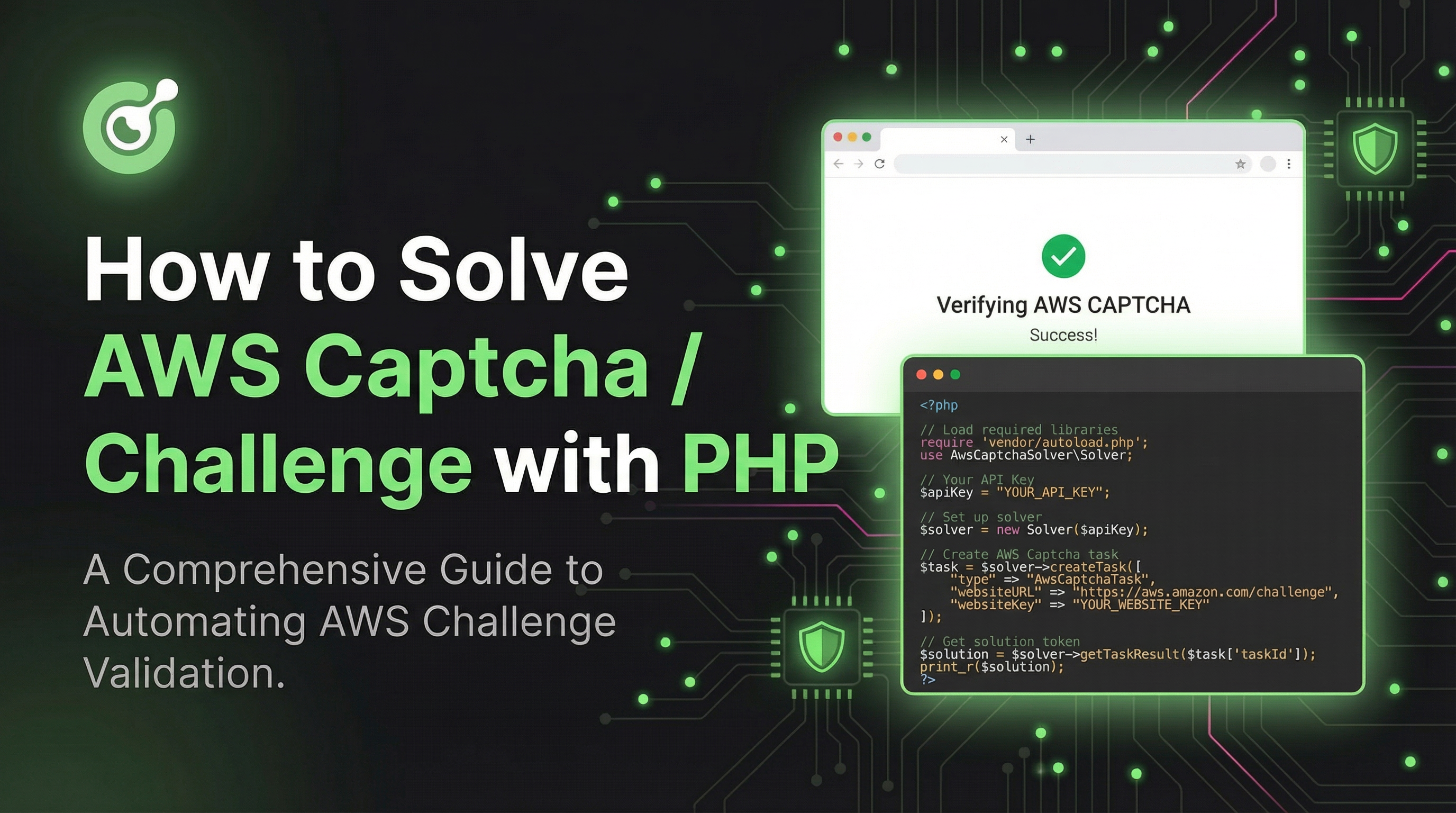
How to Solve AWS Captcha / Challenge with PHP: A Comprehensive Guide
A detailed PHP guide to solving AWS WAF CAPTCHA and Challenge for reliable scraping and automation

Rajinder Singh
10-Dec-2025

